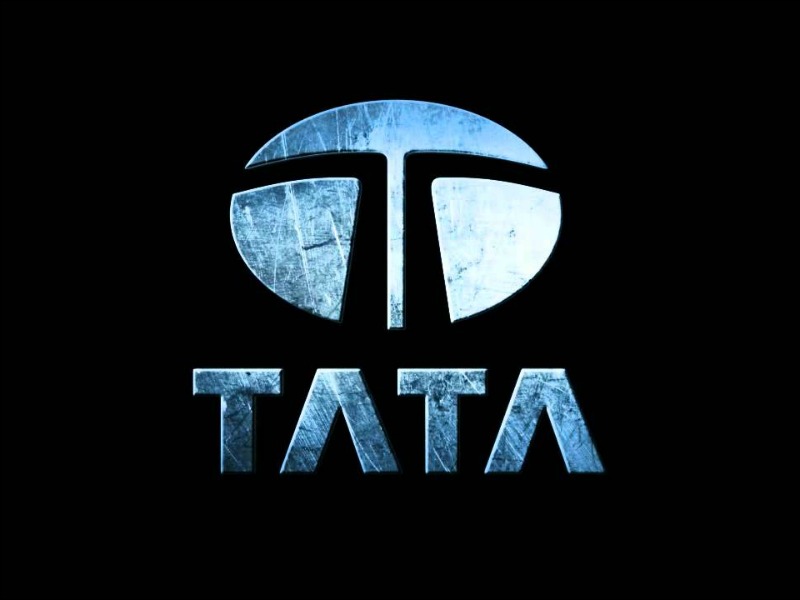Holmes Report 15 Jan 2017 // 8:28PM GMT

You can access Part 1 of our annual Crisis Review here.
5. Harambe at the Cincinnati Zoo
On May 28, a three-year-old boy clambered over a public barrier at the Cincinnati Zoo & Botanical Garden’s Gorilla World and fell 15 feet into the exhibit’s moat. Zookeepers immediately tried to draw three gorillas away from the scene. But Harambe, a western lowland silverback gorilla, grabbed the boy by the ankle and dragged him several meters across the exhibit. Fearing the boy was in danger, zoo officials took the decision to shoot Harambe.
The tragedy involved three separate but related issues,” says Richard Levick, founder and CEO of Washington, DC-based Levick. “The killing of the animal, questions about safety provisions, and the defense of zoos themselves as humane institutions."
The Zoo issued a release the day after the incident, explaining its action and following through later with statements via social media. According to Levick, the zoo expressed deep concern, an unwavering conviction that it had acted correctly; provided a credible rationale for its drastic action; and discussed specific action points to make an already safe facility even safer.
“One salient lesson here is about being forearmed with credible messages,” Levick says. “For example, subsequent media coverage highlighted the point that Harambe might have been tranquilized, not shot. The Zoo had already advised that ‘tranquilizers do not take effect for several minutes and the child was in imminent danger. On top of that, the impact from the dart could agitate the animal and cause the situation to get much worse.’ (Harambe was already dragging the child.)
“The Zoo understood another lesson: never blame victims, especially mothers and children. The child had gone out of his way to climb over numerous barriers while social media castigated the mother for her negligence. The Zoo stayed mum on both those points, letting others make the case if they cared to. The Zoo emphasized instead that it had saved the child’s life, adding that Harambe’s death was a ‘huge loss’ for its ‘family.’”
Adds Tim Luckett of Hill+Knowlton, ““The Cincinnati Zoo crisis was a great example of the importance of empathy and correct tone of voice in the face of highly emotional online criticism.
“The Zoo's leadership did many things right, including responding quickly, regularly and addressing the appropriate areas of public concern – demonstrating a clear understanding of where criticism was focused. In other words, it was in touch with its audience. Most importantly, the Zoo’s leadership expressed empathy and emotion, aligning itself with shocked animal lovers across the world, and even publicised ways that the public could support endangered Gorillas. That combination of adopting the right tone of voice and taking action to authenticate a message is something that we can all learn from.” — PH
6. Facebook's Free Basics plan backfires in India
The road to hell is paved with good intentions. For Facebook, that meant a grand plan to connect millions of Indians to the internet, via a 'Free Basics' offering that would provide limited access to the Internet through a suite of websites and services that, unsurprisingly, included the world's largest social network.
Facebook appeared to think that Indians would jump at this opportunity. Instead, they found themselves scorned, fighting off allegations that the company was attempting to create an unfair marketplace that favoured its own products.
"Three things that went wrong with Facebook’s handling of Free Basics in India were the messaging, the messaging tools and the target audience selection," says Avian Media CEO Nitin Mantri. "Facebook used technical language to explain the idea of Free Basics. Also, they chose to insert advertisements in television and newspapers to convey their messages. While it probably did reach Government, it didn’t really reach the millennials. They consume news online and the pro net-neutrality brigade, on the other hand, used various tools, especially digital media, to reach out to different audiences."
Eventually, Free Basics was banned in India, despite high-profile visits and op-eds by Mark Zuckerberg to promote the initiative, part of a $45m effort that ultimately came to nothing for the social networking giant.
Mantri believes that there are two lessons which can be drawn from Facebook's experience in India, both of them relatively simple ones. The first stems from basic honesty. "Marketing messages must be consistent with the product," he explains. "When Facebook introduced the idea of Free Basics they presented it as a philanthropic initiative. But the idea was not to connect India to the internet but to bring all Indians on Facebook, which means the social media site was trying to secure future consumers. Facebook should have communicated this agenda when introducing the idea."
The second, meanwhile, focuses on the company's tactical outreach. "Facebook ignored public emotions," he notes. "Indians are particularly sensitive to Western companies. In order to strike a chord with future users, companies need to understand their day-to-day lives, their biggest hopes and fears, along with the history and culture of the country. That’s the way to win support for your bid idea in India." — AS
7. Samsung's exploding phones
In September, less than a month after launching its new Galaxy Note 7 smartphone, Samsung announced plans to recall all of the more than 3 million devices it had sold to that point, after reports that the phone was prone to overheating and spontaneous combustion. Eventually, it halted production and scrapped the product entirely at a cost of at least $6 billion.
If public relations experts are to be believed, the cost to the brand could be just as severe.
Late in the year, the University of Georgia and PROI Worldwide conducted a survey of crisis experts, 74% of respondents said Samsung failed to manage early information and thereby was unable to stay ahead of the crisis. Almost as many (70%) said Samsung failed to provide relevant information on the crisis and did not provide information that would help the public understand the crisis.
“When every time you board a plane, a flight attendant announces that your brand has been banned from flights by a federal regulatory body, you know that your company is in crisis,” said Bryan Reber, the C. Richard Yarbrough Professor in Crisis Communication Leadership at the University of Georgia.
Adds Caroline Duffy of PROI agency Jackson Spalding, “The main issue with Samsung is repeated failure. They actually managed the first wave of the issue pretty well. But it seems they launched the ‘solution’ too quickly and fumbled once customers exposed that ‘the fix’ was actually plagued with the same defect that caused the initial round of overheating. Once the story elevated to the point of flight attendants broadcasting the dangers of Samsung devices inflight, the company had lost all credibility.
“The Samsung name is now associated with danger, and it will take a concentrated campaign—with visual, scientific proof-- to turn sentiments around and repair customer trust.”
“The lesson we should learn from the Samsung crisis is that being accurate trumps being fast,” adds Tim Luckett, global crisis lead at Hill+Knowlton Strategies. “Samsung acted incredibly quickly to withdraw the Note 7, to claim it had found a fix and to reintroduce the product. When further Note 7s started catching fire it was clear the company did not understand the source of the issue, which created confusion and an extra wave of reputational damage. Modern media forces companies to act quickly in times of crises, but it is worth taking short term reputational hits to ensure the right long term solution is found and properly communicated.”
But Karen Doyne, who heads the US crisis practice at Burson-Marsteller, takes a different view.
“The Samsung crisis—and more specifically, the resilience of the company and the brand despite the recall crisis—is a much-needed humility check for crisis experts: prognosticate with caution. Traditional media and blogs were filled with crisis pundits armchair-quarterbacking Samsung’s crisis management, and the consensus was bleak. Yet, Samsung apparently is going strong as it enters 2017. In fact, by some accounts, its biggest challenge has been getting consumers to part with their potentially incendiary smart-phones.” — PH
8. Tata's leadership battle
Cyrus Mistry's dramatic removal as chairman of Tata Sons last year was not just the biggest business story to emerge from India in recent times. It also shone a spotlight on the public relations moves that underpinned an unseemly war of words between the $100bn Tata empire on one hand, and four-year chairman Mistry on the other.
For the Tata group, typically viewed as a model of corporate probity in India, Ratan Tata's decision to dispense with his handpicked successor raised some uncomfortable questions for India's most trusted brand, particularly given how seriously the company takes its reputation. In 2012, for example, the FT described Tata as "a symbol of Indian capitalism, with a rare reputation for combining fast growth and ethical conduct in a nation still bedevilled by corruption."
That mentality, forged over 150 years of Tata's corporate citizenship and CSR work, often translates into a spirit of restraint where the group's communications are concerned, a reluctance to sell its own story in the usual manner of massive conglomerates. But that approach raised issues for Tata as the public sought answers from a company that is unaccustomed to the PR scrutiny it faced.
"Tata has very categorically said he doesn’t want a public spat," said one source familiar with the situation. "The reason for criticism is that people are looking for details, and details are not coming out. And Tata has said they won’t put the details out. This is the trade-off unfortunately."
The leadership battle also saw numerous PR forces move into play, including Edelman and Avian Media on Tata's side, and irrepressible Perfect Relations CEO Dilip Cherian on behalf of Mistry. Lending the situation even more drama, meanwhile, was a front-page letter from veteran adman Arun Nanda that attempted to rebut many of Mistry's claims. Meanwhile, Adfactors was roped in to help assuage investor concerns around the world.
As PRAXIS founder Amith Prabhu notes, "a lot of dirty linen has been washed in public." This is unusual for a company of Tata's stature and reserve. "They have for long been considered India’s most trusted and respected corporate brand," he adds. "This incident will certainly have a short to mid-term bearing on how urban consumers perceive the brand."
By January, Tata had found his new chairman, in the shape of TCS CEO N. Chandrasekaran. But the company's reputation fallout will play out for some time yet, particularly as the legal battle between Mistry and Tata continues. "A lot of investor confidence has been shaken and corporate governance has come into focus," says Prabhu.
"Only time will tell what led to this bloodbath at Bombay House. One thing is for certain – it takes years to build a reputation and a few seconds in a crisis to lose it all." — AS



































.jpg)






























